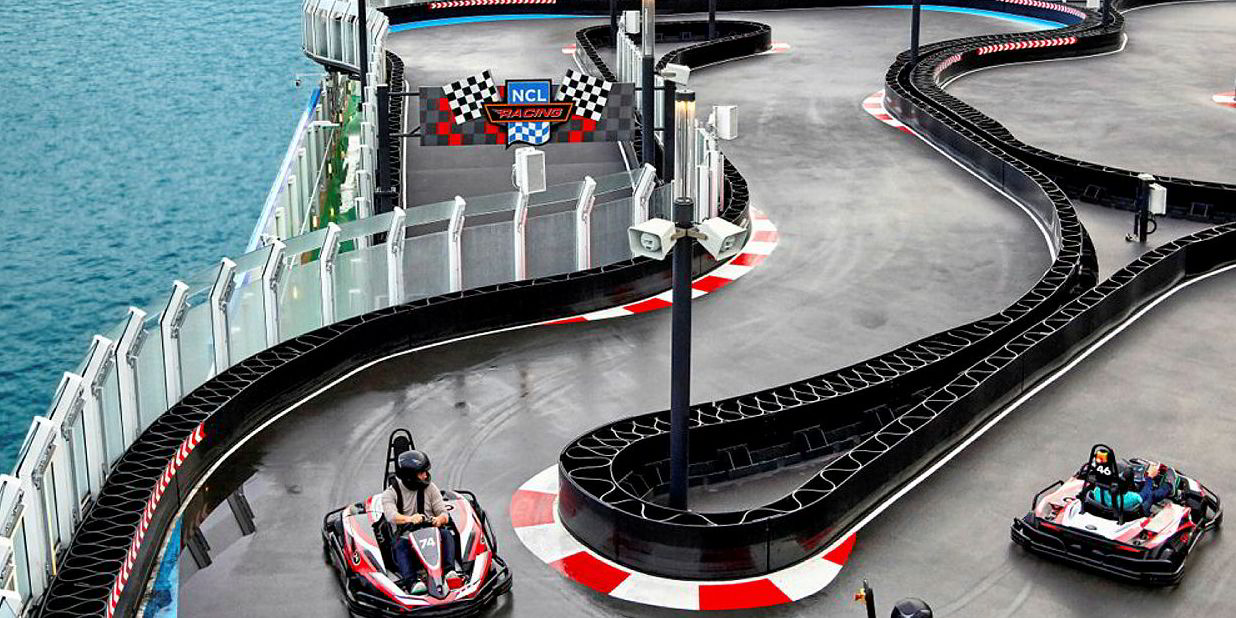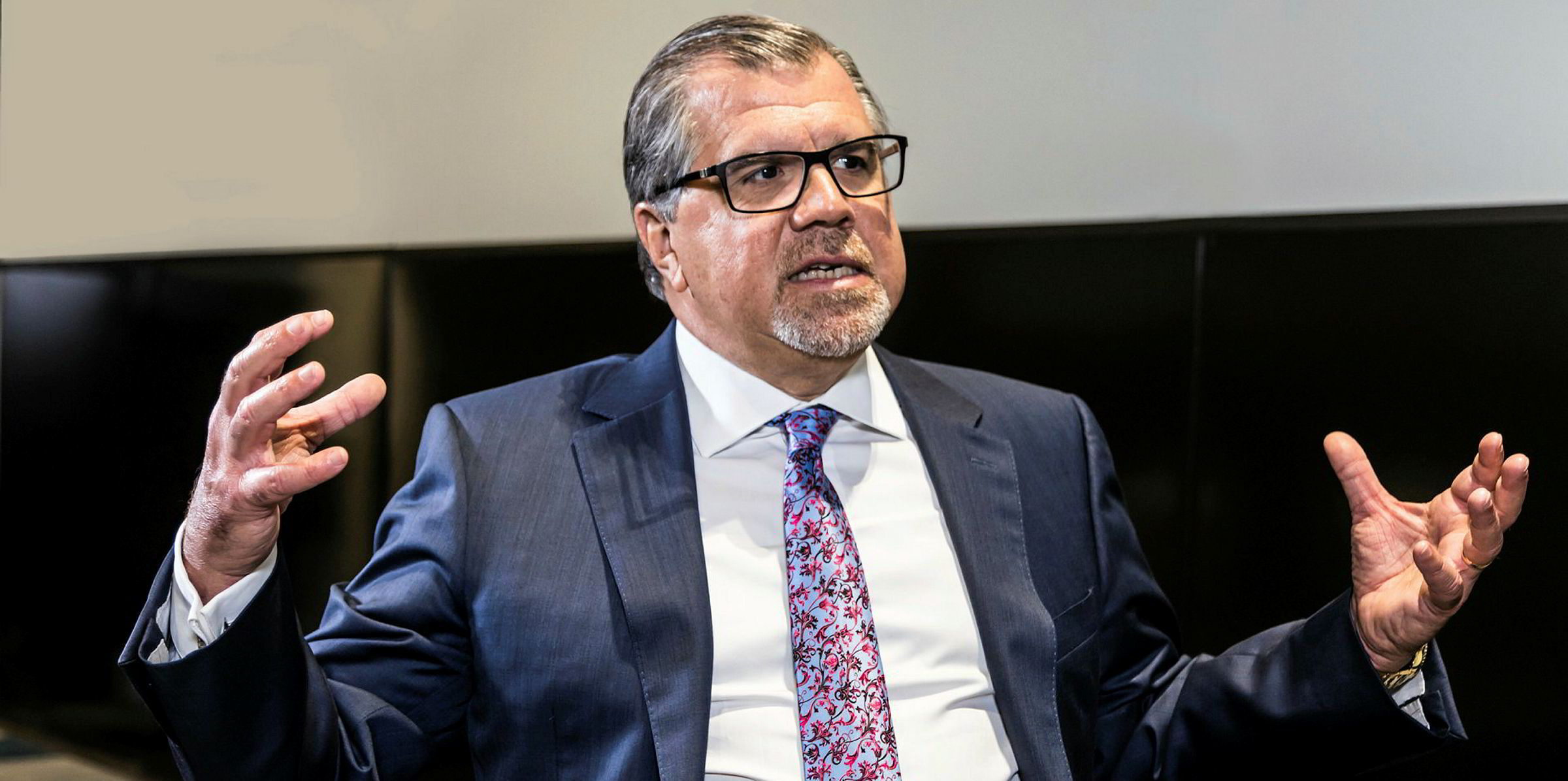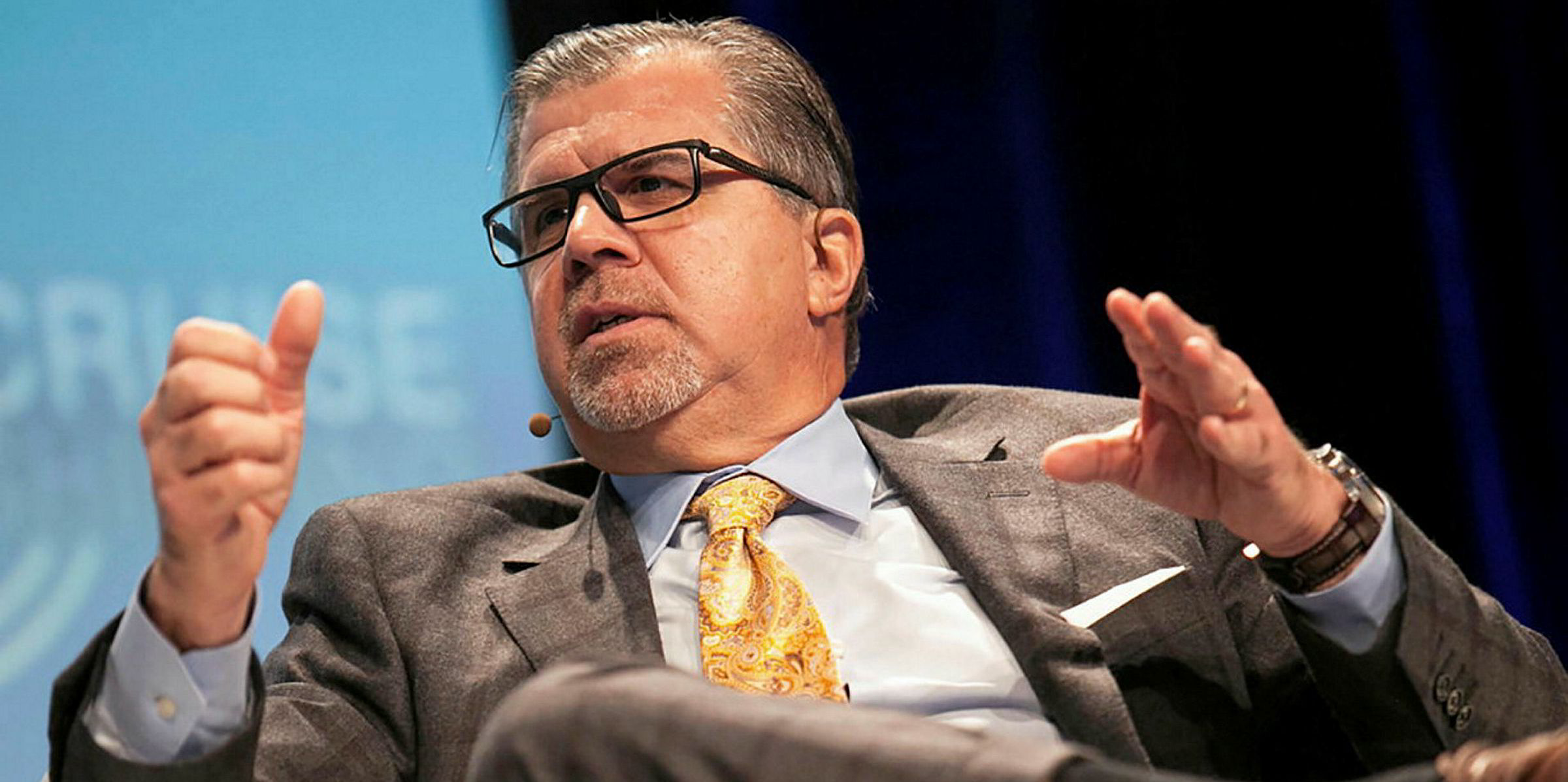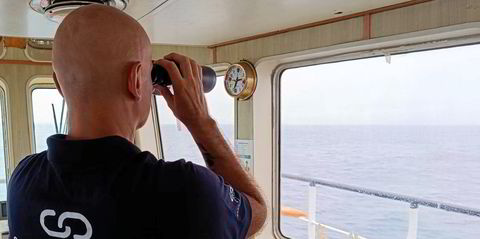The Norwegians — well, their kinsmen, in the shape of Leif Erikson and his fellow Norsemen — were the first Europeans to set foot in North America. A thousand years later, Norwegian Cruise Line (NCL) is following in their wake, riding an expected cruise industry surge to US shores.
The New York-listed company is the fastest-growing cruise major, with plans to add 11 ships to its active fleet of 26 vessels by 2027, chief executive Frank del Rio says.
“We have an industry unlike any other — build them and they will come,” he tells TW+. “Every ship is full, so if every ship is full and we keep raising prices year after year, you have to order more ships. The consumer is screaming for more vessels.”
NCL hopes to sail many of those new ships to the US, pointing out that it has no vessels in Baltimore, Houston, Los Angeles and New Orleans. And the line has only five ships going to Alaska, while some competitors have more than 20.
“I don’t have a ship at all in the second-largest port, the Everglades,” he says. “So there’s lots of virgin territory in the US to add more ships and bring the Norwegian brand, the Oceania brand, the Regent brand to those markets.”
NCL markets aggressively in those areas to attract holiday-makers to US ports of departure but simply needs more vessels to grow its market share there, according to del Rio.
The company sails to Alaska, Tampa and Boston but these markets are under-served, he adds. “Clearly there is a potential to serve those markets better, and we hope to as we take delivery of additional vessels.”
The Caribbean is NCL’s largest market, accounting for 39% of 2019 deployments, followed by Europe (23%), with 13% of this year’s deployments in Hawaii and Alaska.
All lines have plenty of room to grow in the US, and everywhere else, because cruises account for only 2% of holidays, according to Tigress Financial Partners analyst Ivan Feinseth. “They’re all adding ships,” he says.
NCL is well poised to benefit from the potential growth, given its fleet expansion plans over the next few years, says Citigroup analyst Greg Badishkanian. “With only 26 vessels, it’s fairly easy to move the net yield needle, given premium newbuild pricing,” he explains. “We’re particularly upbeat about the company’s 2020 outlook; Norwegian is scheduled to see a nice capacity benefit, which should support improved cash flow.”
NCL plans to capitalise on a heyday in cruising, del Rio says.
“We don’t aim to be the largest but we are growing faster than anybody else because we have literally dozens of unserved or under-served markets … simply because we don’t have enough ships.
“Over the next 10 years we will add roughly 50% more beds than we have today.”
At present, the company offers about 54,400 berths on 26 ships across three brands — Norwegian Cruise Line, Oceania and Regent Seven Seas. The latter two brands carry 10 luxury vessels acquired from Prestige Cruise Holdings for $3bn in 2014.
Altogether, NCL has the industry’s third-largest and youngest fleet and holds 9.2% of the cruise sector by passenger numbers and 12.6% by revenue.
Rival Carnival Corp has 104 active ships carrying 231,000 berths, for market shares of 47% of passengers and 40% by revenue. It has 19 ships on order up to 2025.
Royal Caribbean Cruises has 60 ships (a 9.2% share) sailing, with 135,520 berths (a 12.6% share). It has 16 ships on order by 2024.
“We’re the fastest-growing cruise line, but, you know, let others be the biggest,” del Rio says. “I don’t think size really matters.
“I focus on trying to deliver the best returns to my shareholders, to provide the best and highest-quality service to my clients and customers.”
To that end, he believes NCL just needs to stay the course, leading the sector in several areas, including revenue yields, operating profit per capacity day and return on invested capital. “We lead the industry in every major financial metric you can think of,” he says.
Last year, NCL netted $249.24 average per berth capacity day. Royal Caribbean recorded $195.54 and Carnival $174.10.
NCL’s return on invested capital came in at 11% for the year, compared with Carnival at “just over 10%” and Royal Caribbean’s 9.68%.
Del Rio’s company has also spent more than $1bn refurbishing its fleet over the past four years while returning $1bn to shareholders in the last year.
“That’s a heck of a list of accomplishments that the team has been able to put together, and we just hope to be able to continue doing what we’re doing,” he says. “We’re exactly on the path that we think we ought to be on.”
The cruise sector continues to grow in leaps and bounds by giving travellers something that land holidays simply cannot, he adds.
“It provides an incredible value to consumers and an incredible product compared to a land vacation, where you fly somewhere and tend to stay in one place for five days or a week.

“I mean, look at the flexibility and variety that cruising offers. People want to go to the destinations that we bring them to.”
He cites a cruise from Barcelona to Rome, which also allows passengers to visit Marseilles and Monte Carlo before heading to Italy’s Portofino and La Verna. “What land vacation can possibly compete with that?”
And let’s not forget the vessels. “These billion-dollar-plus ships are a work of science, a work of art, and people want to be on them.”
Cruise passengers worldwide increased from 17.8 million in 2009 to 28.2 million last year, according to the US-based Cruise Lines International Association. Those numbers are expected to continue their steady upward trend to 30 million this year, during which 14 companies plan to launch 17 ships in total.
Del Rio has every confidence the demand will keep growing, because consumers have shifted from wanting things to experiences.
“Americans have been world-class hoarders and they don’t know what to do with their stuff. Well, that’s changing. The babyboomers have stopped accumulating stuff and the millennials never wanted stuff to begin with. They want experiences.”
Some kids have one-track minds
Leaders of multi-million-dollar companies usually consult the most experienced, respected experts for bold, market-moving concepts.
Not Frank del Rio. When the Norwegian Cruise Line Holdings chief executive is looking for the next big idea to set his company apart from the competition, he turns for advice to his two 13-year-old grandsons.
“All the time,” del Rio tells TW+ during an interview at Seatrade Cruise Global 2019 in Miami Beach. “In fact, tonight we’re going to see the [Miami] Heat [basketball] game and talk about this.”
And why not?
The grandkids were only 10 when they came up with a crazy notion to put a go-kart racetrack on top of a moving cruiseship.
Two years later, the company’s newest vessel, the 4,000-berth Norwegian Bliss, sports a 305-metre track, allowing passengers to race through 12 turns at up to 30 mph (48 km/h).
“We were having a sleepover on a Saturday night and we were getting ready to go on a trip to Monte Carlo to christen the new Regent Seven Seas Explorer,” del Rio recalls.
That night, the two boys kept asking “Pops” if they could have an Xbox video game console while onboard. “I said, ‘Yeah, I can get you guys an Xbox on the ship, don’t worry. [Then] it occurred to me. I said, ‘What else would you like to see on a ship?’ ”
The boys were sent off to bed with their first brainstorming assignment: come up with the top three things they would want on a passengership by the morning.
When the pair came downstairs for breakfast, “they both had a racetrack on the list”, del Rio says. “I looked at it and said, ‘Jeez, this is crazy’.”
But having faith in their vision, he went straight to Robin Lindsay, executive vice president of vessel operations. “I said, ‘Robin, can we install a racetrack on top of the ship?' He said, ‘Anything’s possible’, and he made it possible.”
The track, on the top deck of the 1,094ft (333-metre) Norwegian Bliss, has become so popular that an even larger speedway is planned for sistership Norwegian Encore, set to hit the seas in November.
The CEO and his grandsons have come up with several other fun concepts for the fleet, but won't let on yet what they are. “We’re full of them,” he says.
This article is from TW+ magazine, which will be distributed with TradeWinds on 24 May






